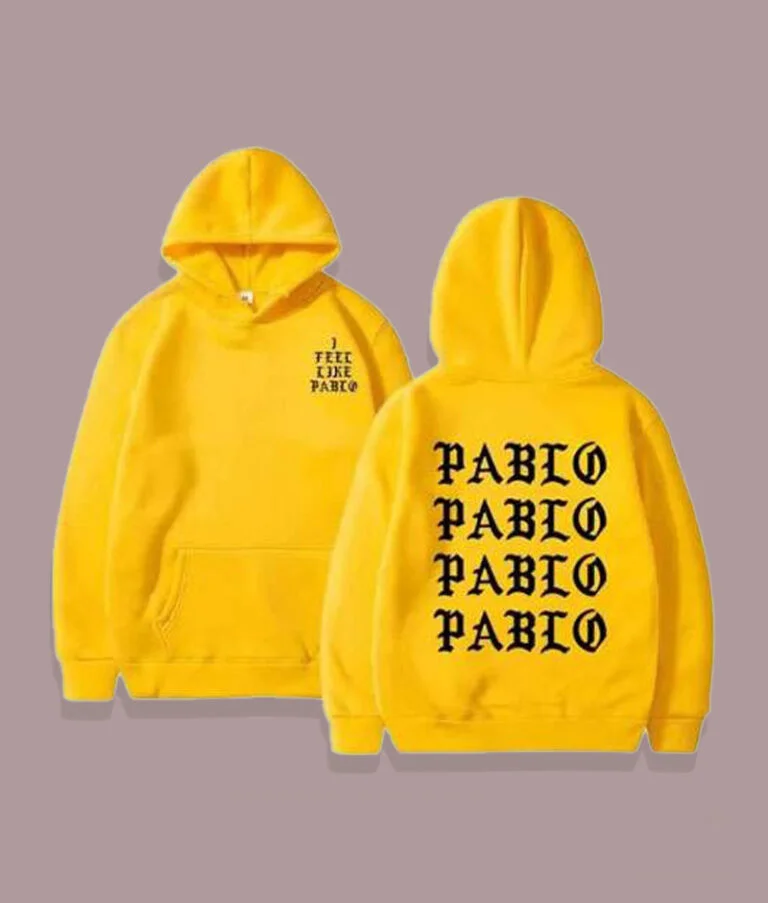Kanye West Merch has not only made a significant impact on music but has also left a lasting mark on the world of fashion, particularly through his merchandise. Known for blending minimalist aesthetics with cultural symbolism, Kanye’s merch lines have become iconic, often selling out in minutes and influencing streetwear trends worldwide. This article delves into the evolution of Kanye West’s merch, its cultural significance, and the reasons behind its enduring appeal.
1. The Origins of Kanye West Merch
Kanye West’s foray into merchandise began around his “Yeezus” album tour in 2013. At the time, band merch had already made a comeback in fashion, with vintage rock band tees becoming popular streetwear items. Kanye took this trend further by creating limited-edition tour merch that blended high-fashion elements with streetwear. His Yeezus tour merch, designed with artist Wes Lang, featured gothic-inspired graphics, skeletons, and Native American motifs, making a bold statement and marking the start of a new era in artist merchandise.
2. The Rise of “I Feel Like Pablo” Merch
The “I Feel Like Pablo” merch, released during Kanye’s “The Life of Pablo” album era in 2016, was a game-changer. The album’s unconventional release—initially available only via streaming—was paired with a unique marketing approach that involved limited-edition merchandise. The “I Feel Like Pablo” line was characterized by its bold text-based designs, often featuring lyrics from the album or religious phrases printed in a gothic font.
The merch was not just available at concerts; Kanye also set up temporary pop-up shops in major cities worldwide, creating a frenzy among fans who lined up for hours to get their hands on exclusive items. This strategy turned the “I Feel Like Pablo” merch into a cultural symbol, blending music, art, and fashion into one cohesive experience.
3. The Evolution of Yeezy Merch
Beyond just concert merchandise, Kanye’s influence in fashion extended through his Yeezy brand, a collaboration with Adidas that launched in 2015. While primarily known for its sneakers, Yeezy also offered apparel that mirrored Kanye’s signature aesthetic: earthy tones, oversized silhouettes, and distressed finishes. The minimalist and utilitarian vibe of Yeezy’s clothing line resonated with many and further popularized the “athleisure” trend.
Kanye’s approach to Yeezy merchandise included his distinctive drop model, releasing items in limited quantities to create hype and exclusivity. This strategy cultivated a sense of urgency and desirability, pushing fans and resellers alike to scramble for pieces as soon as they were released.
4. “Jesus Is King” Merch and the Fusion of Fashion with Faith
In 2019, Kanye West released his gospel album “Jesus Is King,” and the accompanying merch took a spiritual turn. The designs featured religious imagery, biblical quotes, and bold prints that echoed the album’s themes of faith and redemption. The merch line included sweatshirts, T-shirts, and hats, all of which displayed phrases like “Jesus Is King” and “Holy Spirit.”
The use of religious iconography sparked discussions about the intersection of faith and fashion. Some critics saw it as a sincere expression of Kanye’s spiritual journey, while others viewed it as a commercial exploitation of religion. Regardless of the controversy, the “Jesus Is King” merch solidified Kanye’s ability to merge his personal beliefs with his artistic and business ventures.
5. The Role of Pop-Up Shops and Limited Releases
Pop-up shops have played a crucial role in Kanye West’s merchandising strategy. Whether it was for the “The Life of Pablo” era or the “Jesus Is King” album, Kanye utilized temporary stores to create buzz and foster a sense of exclusivity. These shops, often located in trendy urban areas, featured unique interior designs that matched the aesthetic of the merch.
The limited nature of these releases only added to the allure, as fans felt compelled to buy items on the spot, knowing they might not get another chance. The scarcity-driven model helped Kanye maintain a luxury image for his merchandise while also appealing to the streetwear culture’s obsession with rarity.
6. Collaborations and Cultural Impact
Kanye West’s merch collaborations with other brands and artists have further amplified its cultural impact. For example, his partnership with French brand A.P.C. in 2014 yielded minimalist, military-inspired collections, while his work with Adidas for the Yeezy line redefined sneaker culture.
Kanye’s ability to bridge the gap between music and high fashion has influenced many artists to approach merch as more than just promotional items. Artists like Travis Scott, Justin Bieber, and Billie Eilish have adopted Kanye’s strategy of using limited-edition merch drops, pop-up shops, and collaborations to enhance their personal brands.
7. The Role of Controversy in Shaping Kanye’s Merchandise
Kanye West’s merchandise has often stirred controversy, and this has contributed to its allure. Whether it’s the use of the Confederate flag on Yeezus tour merch or the bold political and religious statements made through his “Jesus Is King” line, Kanye has never shied away from polarizing designs.
His ability to provoke conversation and stir debates has turned his merch into more than just clothing—it’s become a form of social commentary. By addressing controversial topics through his designs, Kanye challenges his audience to think critically, turning his fashion into a form of cultural discourse.
8. The Future of Kanye West Merch: What’s Next?
As Kanye West continues to evolve as an artist, his merch is likely to follow suit. The rapper’s forays into new ventures, such as his Sunday Service performances and his presidential run in 2020, suggest that his future merchandise may take even bolder and more unconventional directions. Given his track record, it wouldn’t be surprising if Kanye continues to blur the lines between fashion, music, and ideology, using his merch to push boundaries and set trends.
The future may see more collaborations, sustainable fashion efforts, or even digital merch for virtual environments in the metaverse. With Kanye’s history of innovation and reinvention, one can only expect that his merchandise will remain at the cutting edge of cultural and fashion trends.
Conclusion
Kanye West’s merch has transcended its original purpose as mere concert souvenirs, becoming a symbol of cultural movements and fashion revolutions. His approach to design, marketing, and exclusivity has not only redefined artist merchandise but has also influenced the broader fashion industry. Kanye’s ability to merge his personal narrative with his creative work makes his merch unique, turning it into a collectible representation of cultural moments. As he continues to challenge norms and explore new artistic avenues, Kanye West’s merch will undoubtedly remain a force to be reckoned with in the world of fashion.







